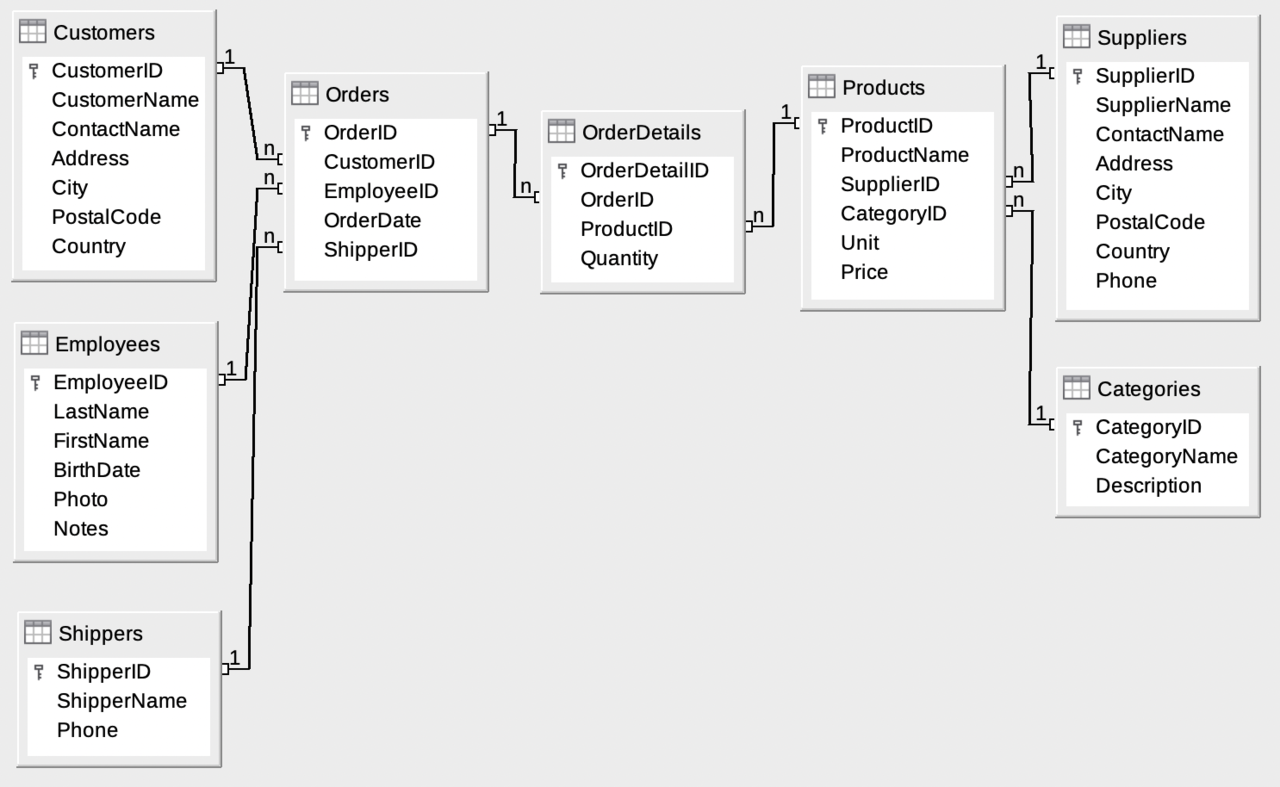The LEFT (OUTER) JOIN Clause
The LEFT (OUTER) JOIN clause returns all records from the left table (table1), and the matching records from the right table (table2).
The result is 0 records from the right side, if there is no match.

|
|
SELECT column_name(s)
FROM table1 LEFT JOIN table2
ON table1.column_name = table2.column_name;
|
|
Assume the two tables Customers and Orders are given as follows:
| Customers |
| CustomerID |
CustomerName |
| 1 |
Raj |
| 2 |
Neha |
| 3 |
John |
| 4 |
Anuj |
|
|
| Orders |
| OrderID |
CustomerID |
OrderAmount |
| 101 |
1 |
4500 |
| 102 |
2 |
1200 |
| 103 |
1 |
2200 |
| 104 |
3 |
800 |
|
The
LEFT JOIN clause returns all records from the left table (
Customers), even if there are no matches in the right table (
Orders).
SELECT c.CustomerName, o.OrderAmount
FROM Customers c LEFT JOIN Orders o
ON c.CustomerID = o.CustomerID;
|
|
⇒
|
| CustomerName |
OrderAmount |
| Raj |
4500 |
| Raj |
2200 |
| Neha |
1200 |
| John |
800 |
| Anuj |
NULL |
|
Demonstration
Below is an SQL test area from W3Schools, which uses the well-known Northwind sample database.
The tables here are for read only because of the problem of embedding the scripts.
For a fully working example, check this by using Chrome.

|
|
The Database includes:
| Tablename | Record |
|---|
| Customers | 91 |
| Categories | 8 |
| Employees | 10 |
| OrderDetails | 518 |
| Orders | 196 |
| Products | 77 |
| Shippers | 3 |
| Suppliers | 29 |
|
This SQL-Statement is not supported in the WebSQL Database.
The example still works, because it uses a modified version of SQL.
Your browser does not support WebSQL.
Your are now using a light-version of the Try-SQL Editor, with a read-only Database.
If you switch to a browser with WebSQL support, you can try any SQL statement, and play with the Database as much as you like. The Database can also be restored at any time.
Our Try-SQL Editor uses WebSQL to demonstrate SQL.
A Database-object is created in your browser, for testing purposes.
You can try any SQL statement, and play with the Database as much as you like. The Database can be restored at any time, simply by clicking the "Restore Database" button.
W3C WebSQL
WebSQL stores a Database locally, on the user’s computer. Each user gets their own Database object.
WebSQL Browser Support
WebSQL is supported in Chrome, Safari, and Opera.
If you use another browser you will still be able to use our Try SQL Editor, but a different version, using a server-based ASP application, with a read-only Access Database, where users are not allowed to make any changes to the data.

